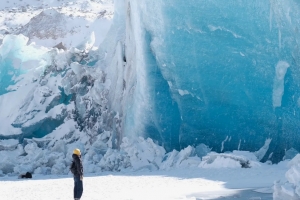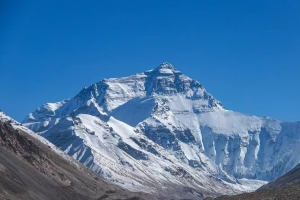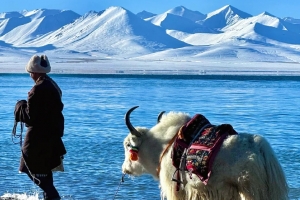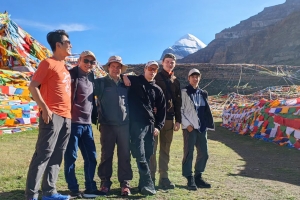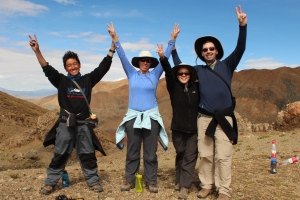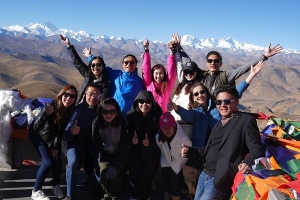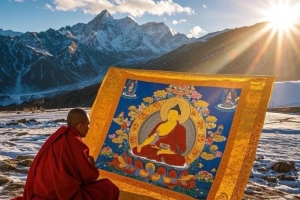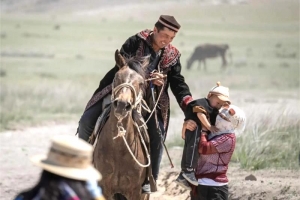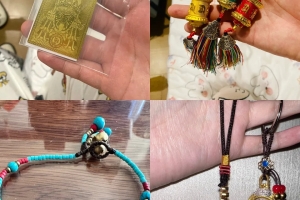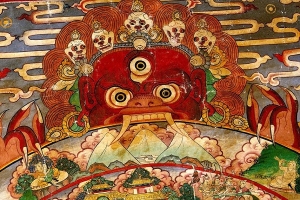If you’ve ever stepped into a Tibetan monastery or the home of a local family, you’ve likely seen a vibrant painting—depicting Buddhas or mythological scenes—hanging high in a shrine or resting rolled up on a table.
That is a Thangka.
More than just a decorative scroll, a Thangka is the spiritual totem of the Tibetan people and one of the most stunning forms of visual art in Tibetan culture.
It embodies faith, tells stories of history and religion, and serves as a sacred medium for spiritual connection.
What Is a Thangka? Tibet’s “Sacred Scroll”
In Tibetan, Thangka means “scroll painting” or “cloth painting.” It is a form of traditional Tibetan Buddhist art painted on canvas, silk, or paper.
Common subjects include:
- Buddhas and Bodhisattvas
- Mandalas from Vajrayana Buddhism
- Religious legends and cosmology
- Tibetan astronomy and calendars
Defining features of Thangka art:
- Portable: Easily rolled and transported for worship
- Brilliant colors: Made from natural mineral pigments that resist fading
- Sacred geometry: Meticulously detailed and symmetrical, conveying divine order
- Spiritual significance: More than art—it is a meditative tool, a visual scripture
For Tibetan practitioners, a Thangka is not just an image, but a spiritual anchor, expressing their deepest devotion.
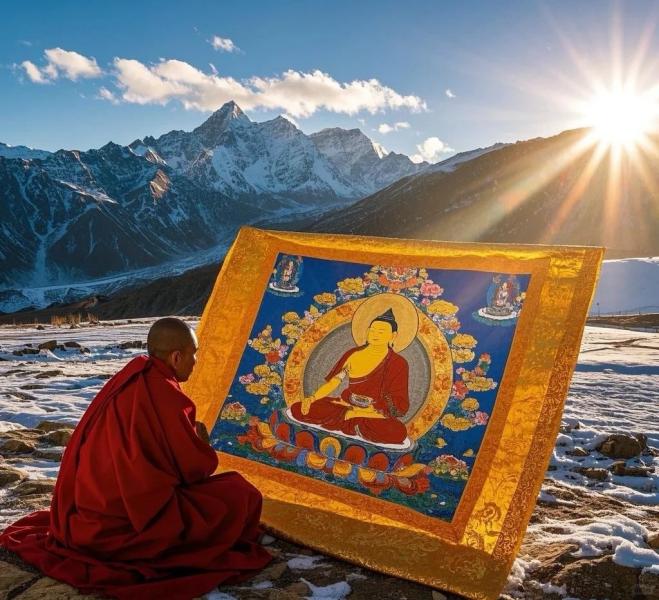
Tibetan Thangka
How Many Types of Thangka Are There?
Thangka can be classified into several types based on materials and technique:
| Type | Description |
| Painted Thangka | Most common; hand-painted with natural pigments like cinnabar and azurite |
| Embroidered Thangka | Intricately stitched using silk or gold threads; often found in large monasteries |
| Kesi (Tapestry) Thangka | Woven like imperial tapestries; rare and highly valuable |
| Pearl-Inlaid Thangka | Embellished with gemstones and metal threads; typically royal or high-lama collections |
| Black Thangka | Features gold lines on a black background, representing protective deities and mysticism |
Some Thangkas take months—or even years—to complete. A single Buddha’s face may require a painter to meditate in seclusion for seven days before making the first brushstroke.
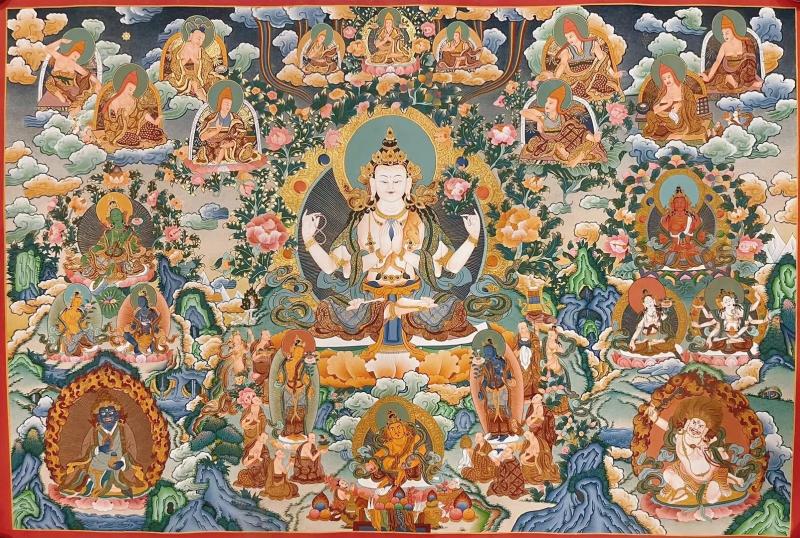
Where Can You Experience Thangka Culture in Person?
1.Lhasa:Tibet Museum
A comprehensive collection of ancient and modern Thangkas
Recommended time: 1–2 hours
Admission: Free
Address: Luobulinka Road, Lhasa
2.Shigatse:Tashilhunpo Monastery Thangka Festival
Held on the 15th day of the 7th month of the Tibetan calendar
Giant Thangka unfurled on hillside, witnessed by thousands in a spectacular display of devotion
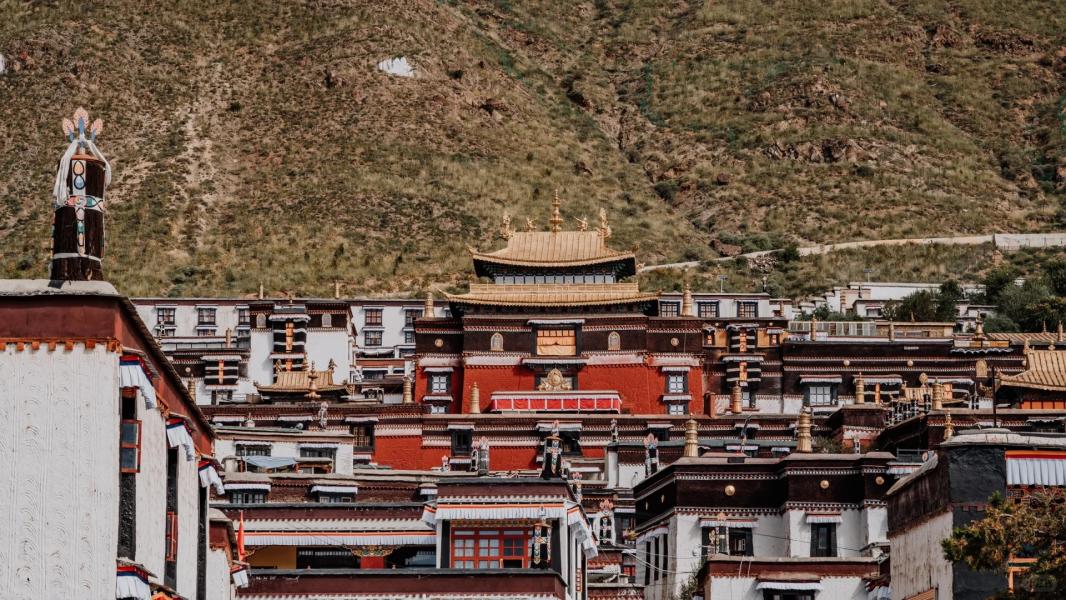
Tashilhunpo Monastery
3.Chamdo / Rebgong Area :Thangka Workshops
Hands-on experience in pigment grinding, sketching, and gilding
Recommended locations: Rebgong (a UNESCO heritage site for Thangka art), and workshops around Barkhor Street in Lhasa
4.Barkhor Street:Shopping & Painting Experience
The best place in Lhasa to find authentic Thangka stores
Meet master painters, order custom pieces, or join beginner art classes
Tips for Exploring the World of Thangka
| Activity | Tips |
| Photography | Many monasteries prohibit photographing Thangkas—always respect local rules |
| Buying Thangkas | Hand-painted works can be expensive; look for workshop certifications to avoid mass-produced copies |
| Art Workshops | Book ahead for short-term classes offered by monasteries or studios |
| Best Time to Visit | Around Tibetan Buddhist festivals like the Thangka Unveiling Festival |
| Religious Respect | Do not touch, unroll, or mishandle Thangkas used for worship |
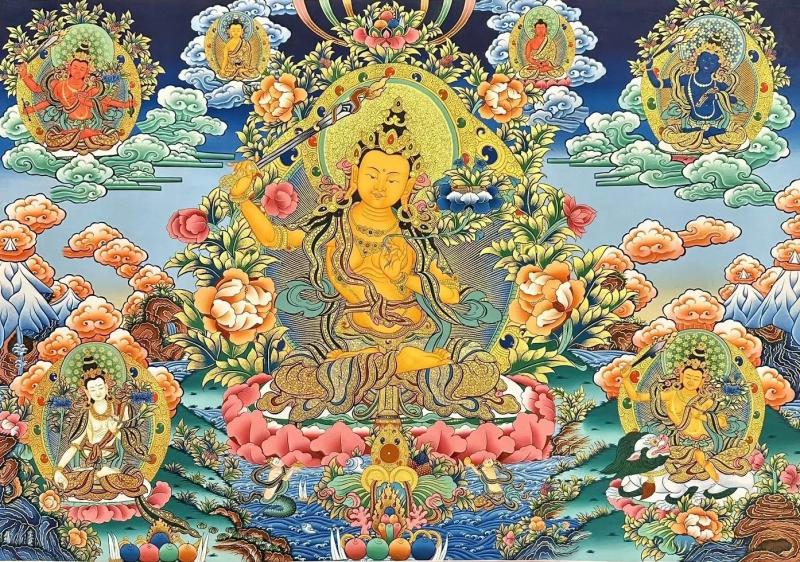
Manjusri Bodhisattva Thangka
The Meaning of Thangka: Where Faith Meets Art
Thangka is not only the pinnacle of Tibetan artistry—it is also a form of “visual meditation.”Its symmetry, complexity, and sacred iconography transform abstract spirituality into tangible imagery.
For the viewer, a Thangka is more than a painting; it invites stillness, reverence, and reflection.
You don’t need to fully understand Tibetan Buddhism to stand in front of a Thangka and feel its power.It might be the first time you truly look into the emptiness and fullness within your own heart.
When you visit Tibet, don’t just rush to photograph snowy peaks or check off the Potala Palace.Take a slower path—step into a painting, a workshop, or the life of a devoted artist.
You may just discover that a Thangka is not merely art—It is a stream of sacred light flowing across cloth, carrying centuries of prayer, wisdom, and wonder.

